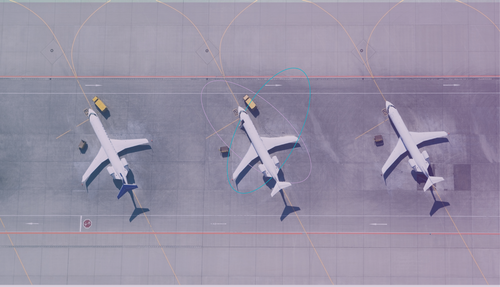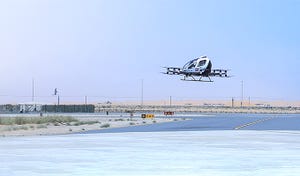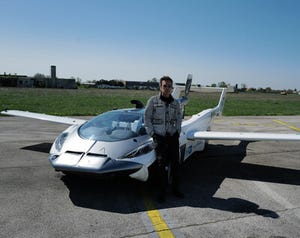Sigfox Partnership to Expand Asset Tracking in Airports
An asset tracking collaboration between the French IoT company and travel firm Amadeus could help to reduce incidences of lost luggage.
December 16, 2019
An asset tracking collaboration between the French IoT firm and travel company Amadeus could help keep track of luggage and airplane equipment.
Founded in 2009, the French company Sigfox was one of the first to emerge solely dedicated to the Internet of Things. The company’s radio-frequency protocol is well-suited for applications that communicate small payloads (up to 12 bytes) relatively infrequently.
At present, the Sigfox network is available in 65 countries, although coverage in some regions, like Europe, is more mature than in others.
The Sigfox coverage area continues to steadily expand, thanks to the company’s efforts to build out networking infrastructure and its partnership with affiliated operators. One such operator is Sigfox Canada, which licenses Sigfox technology and shares its branding, but is otherwise a separate entity.

Kent Rawlings, president of Sigfox Canada, is upbeat about the recent momentum in the technology. Having launched a coast-to-coast network in Canada, Rawlings said falling costs — both for Sigfox chips and the end-devices using them — is one contributing factor.
For the sake of comparison, Rawlings points to the international Sigfox conference he attended last year, “There were about 125 booths there with product manufacturers displaying their devices,” Rawlings said. The average selling price for a device ranged from roughly $100 to $250 per device. When asking those exhibitors how widely those products were deployed in the field, answers tended to be along the lines of “‘Well, no, but we’re doing testing in the lab. Or we have a couple in the field,’” Rawlings remembered. But the situation has changed dramatically in the past year. When attending Sigfox Connect in Singapore, the price of exhibitors’ devices had fallen to roughly $50 to $100. And when asking the exhibitors how widely they were deployed, the answers tended to be in the multiple thousands.
[IoT World is North America’s largest IoT event where strategists, technologists and implementers connect, putting IoT, AI, 5G and edge into action across industry verticals. Book your ticket now.]
“One, there’s a bigger device ecosystem out there. Two, the prices of the devices themselves are starting to decrease. And three, you’re starting to see more in the field — real deployments of the technology,” Rawlings said.

Kent Rawlings
Last month, Sigfox announced an asset-tracking partnership with Amadeus IT Group, which supports the travel and tourism industry in some 190 countries. “The first attraction to Sigfox and the area where it makes sense for a partnership is the fact that Sigfox is the unified network that’s in 65 countries currently with eyes to expand globally,” Rawlings explained. Given the international nature of the economy, “it would make sense for a global infrastructure to be able to track assets, no matter where they are,” he added.
The focus of the collaboration, which is called “Pinpoint,” is asset tracking. Using reusable, inexpensive trackers, the technology will enable real-time information about the location of luggage and airline assets. The cost to deploy Sigfox-enabled asset trackers is a fraction of the cost than it would be with GPS.
One factor that could drive interest in the asset-tracking technology is the International Air Transport Association’s Resolution 753, which went into effect in 2018. The resolution stipulates that airlines track luggage as it moves throughout the airport and to maintain a chain of custody before they are returned to owners.
A focal point of the partnership is a Sigfox beaconing technology known as Bubble, which supports proximity detection in a defined zone. In essence, the technology is similar to a Bluetooth beacon, but with a more refined capacity to interpret distances.
A piece of luggage — or another asset — with a tag containing a $1 Sigfox chip signals its location within range of a Bubble beacon. Before entering that zone, the chip is in essentially sleep-mode to conserve power.
When the technology goes live in 2020, air travelers witnessing it in action will see an airline worker slipping an asset tracker tag onto a piece of checked luggage.
In the back of an airport using the technology, multiple Sigfox Bubble units will track the flow of luggage as it moves from zone to zone on its way to the plane.
The technology could also potentially enable consumers to see via a smartphone app where their luggage is before it is loaded onto the plane.
In a similar vein, Sigfox announced in 2018 a partnership with luxury house Louis Vuitton to integrate Sigfox tracking capability into its Louis Vuitton Horizon luggage line. The Louis Vuitton service makes use of a separate Sigfox offering known as Monarch, which is capable of adapting to local radio-frequency standards. The potential coverage area for that initiative is thus larger.
The Pinpoint project focuses on cost-effective tracking within an airport. “Think of the device as costing less than the buck,” Rawlings said.
Airlines using the program can not only granularly track luggage, but can spot anomalies. If an agent accidentally sends a bag off in the wrong direction, the software underpinning the system can signal an alert, while locating where the bag is.
When asked if airlines using the technology could use the system to benchmark their employees’ performance when handling luggage, Rawlings answers in the affirmative. “That’s the advantage that Amadeus brings. Sigfox delivers the data to Amadeus. Amadeus uses that data to provide valuable information back to the airport, the carrier or the customer.”
While the Pinpoint name refers to the relationship between Sigfox and Amadeus, the same fundamental technology could be used for other applications within aviation and beyond. One example might be tracking the location of a block of metal at a landing-gear manufacturer. As the hunk travels to a string of CNC machines — ultimately becoming a landing gear — a network of Sigfox Bubbles can keep tabs on where that product is in the plant at any point in time.
At the airport, the technique can help locate ground support equipment. Rawlings provides an example of how Sigfox technology could be used for this application. “If you are sitting on the runway and you see a luggage carousel, you’ll see the conveyor belt taking luggage to the top, and you’ll see the tow arm for the plane, a generator and a bunch of other equipment around on the tarmac.”
A New Zealand company known as Blackhawk has built a platform that tracks such airline assets, using a variety of technologies. “For anything that is non-powered, they effectively use Sigfox to track it,” Rawlings said. “Anything that is powered and moving in real time, they’ll use cellular technology, and they combine it into a platform.” The system enables users to see where every piece of equipment is, and to sort for given equipment types. “Let’s say an Airbus A330 needs to get a generator and a tow arm quickly,” Rawlings said. “Now, they simply go to this application, type in Airbus A330 tow arm and power supply, and it will show them exactly on the tarmac where those pieces of equipment are.”
About the Author(s)
You May Also Like




.png?width=300&auto=webp&quality=80&disable=upscale)
.png?width=300&auto=webp&quality=80&disable=upscale)
